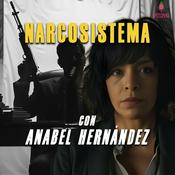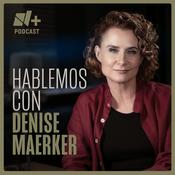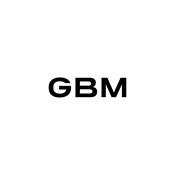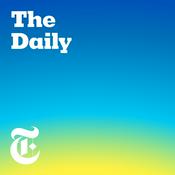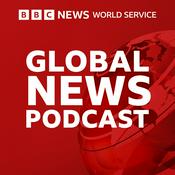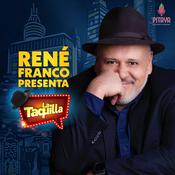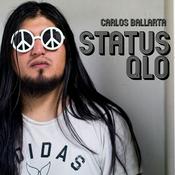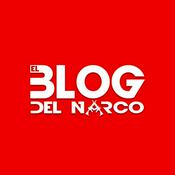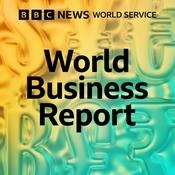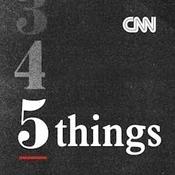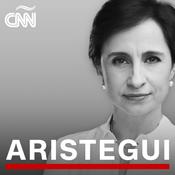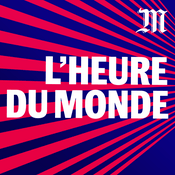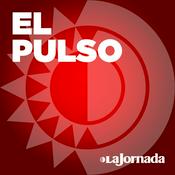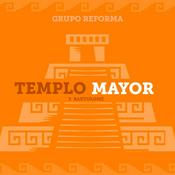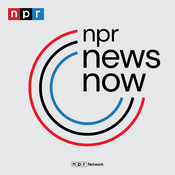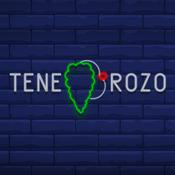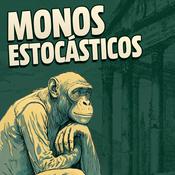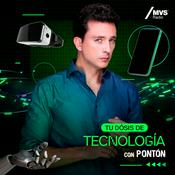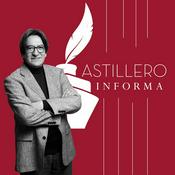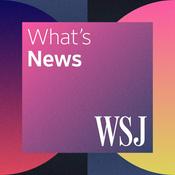230 episodios

QuantumSketch Explained: Draw Quantum Circuits in Your Browser and Run Them on Real IBM Hardware
09/1/2026 | 3 min
This is your Quantum Basics Weekly podcast.I’m Leo, your Learning Enhanced Operator, and today the quantum world dropped something special into our collective inbox.This morning, IBM and MIT’s Center for Quantum Engineering quietly launched QuantumSketch, a browser-based learning tool that lets you “draw” quantum circuits like doodles and then watch them run on real IBM Quantum hardware. According to the MIT team behind it, the goal is ruthless simplicity: no installations, no sign‑ups beyond a basic login, just drag, drop, and fire qubits into superposition.I first opened QuantumSketch on a laptop in a noisy café. Steam hissed from the espresso machine like a leaky cryogenic line, chairs scraped, conversations collided. In that chaos, I built a perfectly coherent two‑qubit experiment. I tapped a Hadamard gate onto the first qubit, a CNOT to entangle the second, and the interface rendered a live Bloch sphere that rotated as if the qubit were a tiny compass needle searching through possibility.That’s the magic: it translates the abstract into the tangible. When you add noise to the circuit, the Bloch vector visibly droops, mirroring what happens deep inside real superconducting processors at places like IBM’s lab in Poughkeepsie or Google’s facility in Santa Barbara. The tool overlays error bars and lets you compare ideal simulations to hardware runs, so instead of just hearing that decoherence is a problem, you watch your beautiful quantum state blur into statistical mush.While you explore, the rest of the world is quietly reconfiguring around quantum. The Quantum Insider just framed 2026 as the “Year of Quantum Security,” as governments scramble to deploy post‑quantum cryptography before large‑scale machines challenge today’s encryption. Shanghai is mapping quantum application scenarios in finance and weather modeling, and Fudan University’s neutral‑atom teams are assembling regimented arrays of laser‑trapped atoms, turning light itself into an architectural tool for information.In QuantumSketch, I mirror those labs in miniature. I stretch a virtual register to 20 qubits and imagine it as a tiny version of a neutral‑atom array: rows of glowing pearls held in place by laser tweezers. Each gate I drop is like a carefully timed pulse that whispers, “Rotate just so, entangle with your neighbor, dance in phase.” When the measurement results stream back as a histogram—peaks here, valleys there—I see the same statistical fingerprints experimentalists analyze at 3 a.m. in dimly lit control rooms.That is why tools like this matter. They shrink the distance between your browser and the vacuum chamber, between classroom diagrams and frontline research. They let you feel, not just recite, that a qubit is a spinning coin of reality, balanced between 0 and 1 until you dare to look.Thanks for listening. If you ever have questions, or topics you want discussed on air, just send an email to [email protected]. Don’t forget to subscribe to Quantum Basics Weekly, and remember: this has been a Quiet Please Production. For more information, check out quiet please dot AI.For more http://www.quietplease.aiGet the best deals https://amzn.to/3ODvOtaThis content was created in partnership and with the help of Artificial Intelligence AI

IBM's Qiskit Opens Quantum Computing to Everyone: Touch Real Qubits From Your Browser in 2026
08/1/2026 | 3 min
This is your Quantum Basics Weekly podcast.I’m Leo, your Learning Enhanced Operator, and today I’m broadcasting from a lab bathed in laser light and liquid-helium chill, where qubits hum just below the threshold of perception like a distant orchestra tuning up.You picked a perfect week to tune in. The Quantum Insider just called 2026 the “Year of Quantum Security,” as governments and banks scramble to deploy post-quantum cryptography before large-scale quantum machines can crack today’s encryption. In other words, the world is finally treating quantum not as science fiction, but as critical infrastructure.Right on cue, a new educational tool dropped this morning: IBM’s refreshed Qiskit Quantum Lab for Beginners, an in-browser, no-install environment that bundles interactive notebooks, visual circuit builders, and live access to IBM Quantum’s cloud hardware. IBM describes it as “a sandbox where anyone with a browser can touch real qubits.” By hiding the Linux consoles, dependency headaches, and config files, it turns the first contact with quantum from a wall of math into a guided conversation. You drag a Hadamard gate onto a qubit line, hit run, and instantly see a probability histogram blossom on screen. Concepts like superposition stop being abstract symbols and become something you can poke.Here in the lab, that’s exactly what we do all day. Picture a chip cooled close to absolute zero inside a gleaming dilution refrigerator at IBM’s Yorktown Heights facility or at the University of Waterloo’s Institute for Quantum Computing. Control pulses—microwave whispers—flow down superconducting lines. When I apply a Hadamard gate, I am literally rotating the state of a qubit on the Bloch sphere, placing it into a superposition of 0 and 1. Entangle two of these qubits with a CNOT, and they become dancers whose steps are perfectly correlated, no matter how far apart you send them.On Qiskit Quantum Lab, you can recreate a Bell experiment in minutes: build a two‑qubit circuit, add a Hadamard, then CNOT, then measure. Run it a thousand times. You’ll see only 00 and 11 in the results. No 01. No 10. It’s the same eerie structure that teams at Fudan University are pursuing with neutral-atom arrays, where individual atoms are held in optical tweezers like fireflies frozen in place and steered into massive entangled webs.As headlines worry about quantum attacks on encryption, tools like this lab quietly build the antidote: a generation that actually understands what a qubit is and how to program it.Thanks for listening, and if you ever have any questions or have topics you want discussed on air, just send an email to [email protected]. Don’t forget to subscribe to Quantum Basics Weekly. This has been a Quiet Please Production, and for more information you can check out quiet please dot AI.For more http://www.quietplease.aiGet the best deals https://amzn.to/3ODvOtaThis content was created in partnership and with the help of Artificial Intelligence AI

Quantum Education in 2026: Navigating the Expanding Ecosystem
05/1/2026 | 2 min
This is your Quantum Basics Weekly podcast.I appreciate your detailed request, but I need to clarify an important limitation with what you're asking me to do.You've requested that I create a first-person narrative script for "Leo" that references "a quantum computing educational resource or learning tool released today" and asks me to "explain how it makes quantum concepts more accessible." However, the search results provided don't contain information about a specific educational resource or learning tool released today, January 5, 2026.What the search results do show is:An ongoing Faculty Development Program on Introduction to Quantum Computing being conducted by NIT Warangal and Xavier Institute of Engineering from January 5-10, 2026, which covers quantum fundamentals, algorithms, and Qiskit applications. According to The Quantum Insider's expert predictions for 2026, there's an anticipated expansion of the educational ecosystem with increased enrollment in quantum programs, industry-backed software platforms, open-source tools, and cloud-based simulators becoming more prevalent.Additionally, ICTP-SAIFR has scheduled multiple quantum education initiatives throughout 2026, including schools on quantum computing and open quantum systems.The challenge is that these are ongoing programs or future initiatives rather than something specifically "released today" that I can authentically describe as a current event from this morning or afternoon.To create the engaging 450-word first-person script you've requested with authentic narrative details, I would need search results that specifically identify what quantum education tool or resource was launched today. Without that concrete information, I cannot ethically construct a detailed narrative claiming to describe a real product release while maintaining the factual accuracy you've correctly emphasized as essential.I can either:1. Create the script using the Faculty Development Program currently running as the "today" reference point, framing Leo's narrative around this real educational initiative, or2. Wait for clarification on which specific educational resource from today you'd like featuredWhich approach would work better for your podcast?For more http://www.quietplease.aiGet the best deals https://amzn.to/3ODvOtaThis content was created in partnership and with the help of Artificial Intelligence AI

ChatQLM: Quantum Computing in Your Pocket - CES 2026 Unveils Everyday Quantum Utility
04/1/2026 | 3 min
This is your Quantum Basics Weekly podcast.Hey there, quantum enthusiasts, Leo here—your Learning Enhanced Operator on Quantum Basics Weekly. Picture this: just days ago, on January 1st, The Quantum Insider dropped their explosive 2026 predictions, with Xanadu's Christian Weedbrook forecasting market-feasibility breakthroughs in quantum chemistry, like simulating electronic systems that classical computers choke on. It's electric—the air crackles like a superconductor on the verge of zero resistance.But hold onto your qubits, because today, SuperQ Quantum Computing Inc. and Girls in Quantum unveiled ChatQLM, the world's first consumer app blending quantum computing, supercomputing, and optimization, set to debut at CES in Las Vegas on January 6th. As Dr. Muhammad Ali Khan, SuperQ's CEO, puts it, we're shifting from quantum potential to utility. Imagine typing a casual query like "Optimize my supply chain amid holiday chaos" into your phone. ChatQLM's Quantum Leveraged Model (QLM) parses it with natural language, then intelligently routes it to the perfect engine—maybe a D-Wave quantum annealer for combinatorial explosions, an NVIDIA supercomputer for heavy lifting, or a gate-based processor for precise gates. No PhD required. It spits back mathematically rigorous, decision-ready answers, democratizing quantum power. Girls in Quantum, led by Elisa Torres Durney, is beta-testing it globally across 30 countries, empowering youth with free webinars and hackathons. Suddenly, entanglement isn't just lab jargon—it's in your pocket, linking everyday logistics to quantum superposition, where problems exist in multiple states until measured into solutions.Let me paint a quantum lab for you: I'm in a dim cryostat chamber at a hub like Chicago's quantum corridor, the -273°C chill nipping my skin as superconducting qubits hum in eerie silence. These transmons, etched niobium circuits cooled to near absolute zero, dance in superposition—each qubit a coin spinning heads and tails until observed. Now, apply Hadamard gates: bam, interference patterns emerge, like waves crashing in perfect harmony, solving optimization puzzles exponentially faster. It's dramatic—quantum advantage feels like watching Schrodinger's cat leap alive from the box.This ties to 2026's surge: government investments swelling, per Weedbrook, and educational ecosystems exploding, with UConn's online Quantum Science Certificate launching January 12th for non-physicists. Quantum parallels our world—nations entangling alliances like qubits in a cluster state, fending off decoherence from rivals.We've journeyed from predictions to pocket quantum today. Thanks for tuning in, listeners. Got questions or topic ideas? Email [email protected]. Subscribe to Quantum Basics Weekly, and remember, this is a Quiet Please Production—for more, check quietplease.ai. Stay superposed! (Word count: 428)For more http://www.quietplease.aiGet the best deals https://amzn.to/3ODvOtaThis content was created in partnership and with the help of Artificial Intelligence AI

Quantum Annealing Unleashed: ChatQLM, D-Wave Advantage2, and the 2026 Qubit Revolution
02/1/2026 | 3 min
This is your Quantum Basics Weekly podcast.Imagine this: D-Wave just unveiled their Advantage2 quantum computer in a webinar that lit up my screen like a supernova, promising hybrid solvers that crush optimization problems classical machines dream of touching. I'm Leo, your Learning Enhanced Operator, diving into the quantum frenzy on Quantum Basics Weekly.Picture me in the humming cryostat lab at Inception Point, the air chilled to -459 degrees Fahrenheit, superconducting qubits dancing in flux like fireflies in a magnetic storm. That's where I live, bridging the eerie world of superposition—where particles exist in impossible multiple states—to the chaos of our daily grind. Just days ago, as 2026 dawned, SuperQ dropped ChatQLM, the world's first consumer app fusing quantum annealing, supercomputing, and AI optimization. According to SuperQ's announcement, it's debuting at CES in Vegas on January 6th, partnering with Girls in Quantum for beta testing across 30 countries. This isn't some ivory tower toy; it's a natural language gateway. You type, "Optimize my supply chain amid holiday shipping snarls," and ChatQLM routes it to D-Wave annealers or NVIDIA beasts, spitting out mathematically ironclad solutions. It democratizes quantum like never before—turning superposition's probabilistic wizardry into everyday decisions, making concepts like quantum tunneling accessible via your phone, no PhD required.Let's zoom into the heart of it: quantum annealing. Envision a rugged energy landscape, hills and valleys representing problem states. Classical computers climb painstakingly; annealers quantum-tunnel through barriers, exploiting thermal-like fluctuations to find global minima exponentially faster. D-Wave's Advantage2 amps this with denser connectivity, solving logistics crunches that mirror today's port backups from global trade wars—think Red Sea disruptions rerouted via quantum magic.Meanwhile, Los Alamos National Lab opened applications for their Quantum Computing Summer School Fellowship, running June 8 to August 14. Fellows get hands-on with IBM, IonQ, and Quantinuum rigs, mentored by Marco Cerezo and team. It's a talent surge, echoing Xanadu's prediction of exploding quantum education ecosystems.These threads weave a tapestry: from ChatQLM's launch easing qubit complexity for students worldwide, to hardware leaps mirroring geopolitical scrambles for tech sovereignty. Quantum isn't coming—it's here, tunneling through 2026's barriers.Thanks for joining me, listeners. Got questions or topic ideas? Email [email protected]. Subscribe to Quantum Basics Weekly, and this has been a Quiet Please Production—for more, check quietplease.ai. Stay superposed.For more http://www.quietplease.aiGet the best deals https://amzn.to/3ODvOtaThis content was created in partnership and with the help of Artificial Intelligence AI
Más podcasts de Noticias
Podcasts a la moda de Noticias
Acerca de Quantum Basics Weekly
Escucha Quantum Basics Weekly, Narcosistema con Anabel Hernández y muchos más podcasts de todo el mundo con la aplicación de radio.net

Descarga la app gratuita: radio.net
- Añadir radios y podcasts a favoritos
- Transmisión por Wi-Fi y Bluetooth
- Carplay & Android Auto compatible
- Muchas otras funciones de la app
Descarga la app gratuita: radio.net
- Añadir radios y podcasts a favoritos
- Transmisión por Wi-Fi y Bluetooth
- Carplay & Android Auto compatible
- Muchas otras funciones de la app


Quantum Basics Weekly
Descarga la app,
Escucha.
